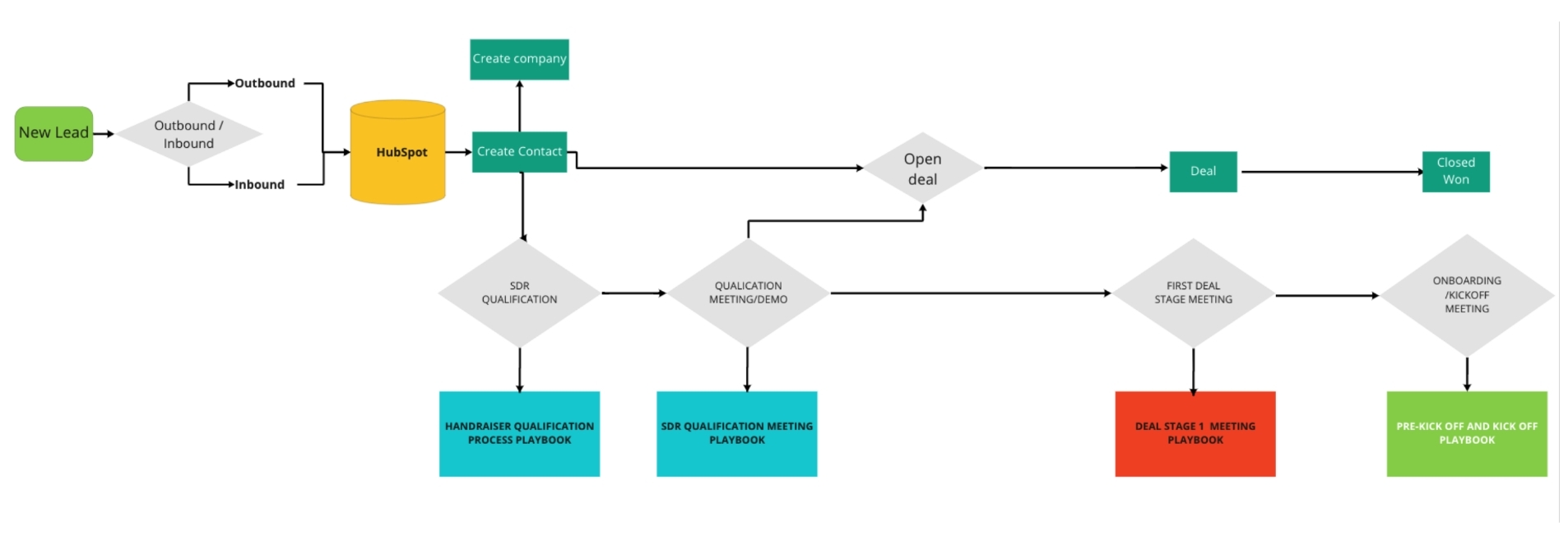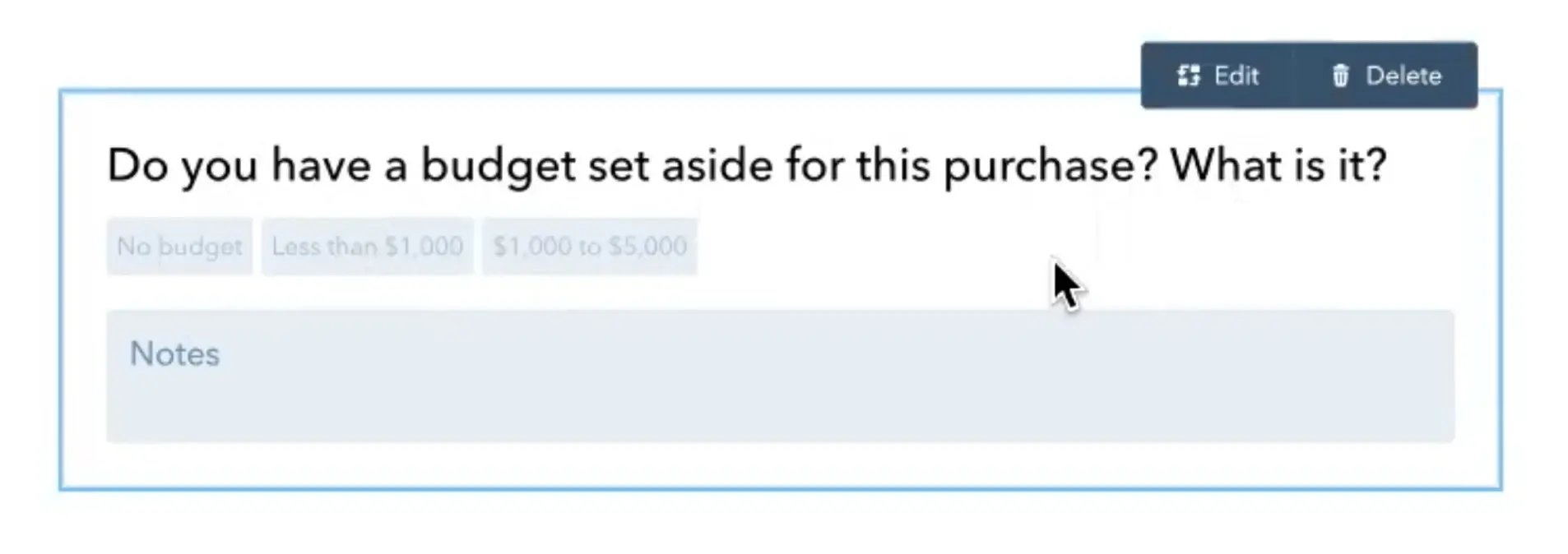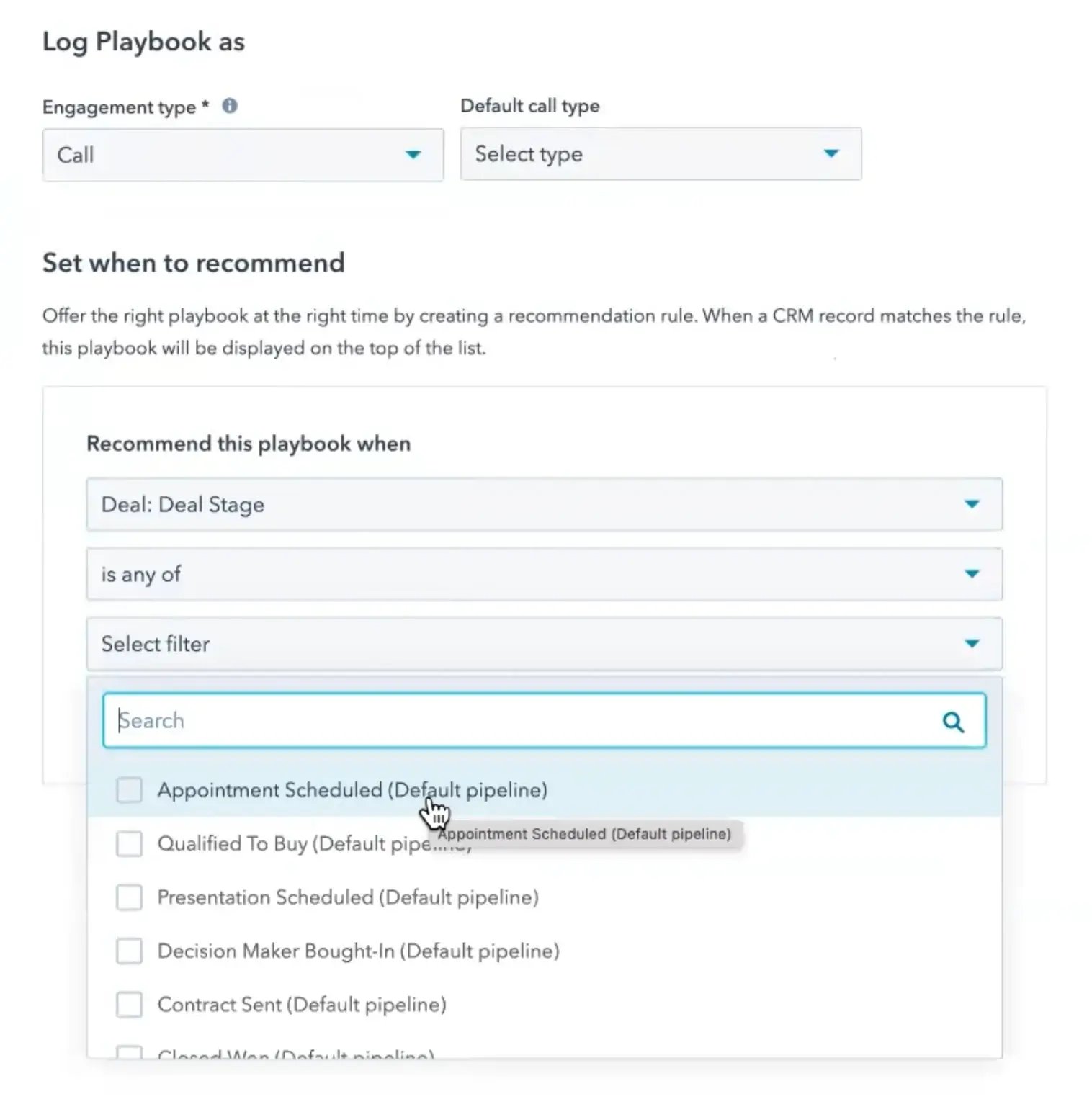
[Full video recording is at the bottom of the post ]
If I had to guess, I'd bet you're probably not using HubSpot playbooks. Don't worry, you're not alone. HubSpot playbooks are an underutilized and often overlooked tool in HubSpot because most people don't know what they are, how to use them, or, if they do know how to use them, are overwhelmed by the prospect of building them.
But building playbooks doesn’t require a massive undertaking and using them can make a huge difference in defining and operationalizing your organization's marketing and sales processes.
.
What is a HubSpot Playbook?
A HubSpot playbook is a just-in-time collection of best practices, templates and strategies that can help you effectively execute your marketing and sales efforts.
Playbooks take the guesswork out of the process for the sales team. By using playbooks, sales reps don't have to think about How do I actually have this call? What I should be focusing on? What are the goals of the call?
Benefits of using HubSpot playbooks:
- Increased efficiency: Playbooks provide a step-by-step guide for executing specific tasks which can help streamline processes and reduce the amount of time and effort required to complete them.
- Consistency: Playbooks can help ensure that all team members are following the same processes and using the same templates which can help improve consistency in messaging and branding.
- Improved performance: Playbooks can provide proven strategies and tactics that have been shown to be effective, which can help organizations achieve better results from their inbound marketing and sales efforts.
- Easier onboarding: Playbooks can be used to train new team members on the company's inbound marketing and sales processes, helping them get up to speed more quickly.
- Better Collaboration: Playbooks can provide a centralized location for storing resources and information that can be accessed by all team members which can help improve collaboration and communication.
Creating the Playbook
Defining the Sales Process
Before you even go into HubSpot to create the playbook or playbooks, first look at your entire sales process to determine where playbooks can support your process.

Every company has its own process. Let's take a look at a sample sales process and where a playbook fits in.
Sample sales process:
Step 1: A New Lead comes into HubSpot through inbound or outbound marketing.
Step 2: The lead is nurtured in HubSpot, becomes a Marketing Qualified Lead, and is assigned to the sales team for sales qualification.
Step 3: SDR qualifies the lead using a HANDRAISER QUALIFICATION PROCESS PLAYBOOK
Step 4: SDR conducts a qualification meeting or demo with the prospect using an SDR QUALIFICATION MEETING PLAYBOOK
Step 5: Sales rep creates an open deal and conducts the first deal stage meeting using a DEAL STAGE 1 MEETING PLAYBOOK
Step 6: The deal is closed/won
Step 7: The new customer is onboarded. The Account manager conducts an onboarding/ Kickoff Meeting using a PRE-KICKOFF AND KICKOFF PLAYBOOKS
Let’s look at the playbooks mentioned above.
Handraiser Qualification Process Playbook
When a new lead raises their hand and indicates they would like to speak to an SDR, you will need to determine if this person is the right fit for your product or service. You will want to find out if this person matches your ideal customer profile (ICP), is in a role with decision-making capabilities and also whether the timing is right, etc.
Depending on your qualification criteria, the SDR may use this playbook to collect data points such as job title, industry, company name, company size, annual revenue, company Linkedin URL, etc. This playbook will be set up to capture that data and guide your SDR through the qualification script.
SDR Qualification Meeting Playbook
If it is determined that your handraiser is a good fit, the next step is for the SDR to conduct a qualification meeting or demo. The SDR will use a different playbook to guide this conversation.
During that call, the SDR may collect information related to BANT (Budget, Authority, Need, Timing) or other qualification criteria. Again, the playbook will remind the SDR which questions to ask and capture the responses as HubSpot properties.
Deal Stage 1 Meeting Playbook
Once a deal has been created in HubSpot, the SDR hands over the account to a sales rep. The sales rep will conduct a meeting with the prospect to learn more about their pain points and goals. The playbook for this meeting could include questions related to the MEDDIC (Metrics, Economic buyer, Decision criteria, Decision process, Identify pain, Champion) sales methodology. The data collected during this meeting would update the properties on the deal level within HubSpot.
Pre-Kickoff and Kickoff Meeting Playbook
Let's say the deal meeting goes very well and the prospect is ready to become a customer. The next step is to on-board the customer. The sales team may handle onboarding or they may pass it off to a customer success team or account manager. The person responsible for onboarding would have his or her own playbook to manage the onboarding process.
Defining the QUALIFICATION CRITERIA
Once you have defined the steps of your sales process, you'll need to determine the qualification criteria at each step of the process. In other words, what is my Ideal Customer Profile (ICP)? What makes a Sales Qualified Lead? What does an opportunity look like?

The answers to these questions will help you determine what data you need to collect at each stage of your sales process.
You can then begin to ask: What's the information we need to gather in order for this sale to close? Once you know what data you need to collect, you can start drafting questions that the sales team needs to ask and defining when to move a prospect to the next step in the process.
Documenting unqualified reasons
One advantage of HubSpot playbooks is that when you determine that a prospect is not a good fit, you can easily document why and automate putting them into a nurture campaign or other next steps.
Building Your Playbook in HubSpot
Your First Version: Start Simple
If building out a comprehensive playbook sounds daunting to you, we recommend starting with something simple.
If your existing sales process and qualification questions are currently on a sticky note or a word document, an easy first step is to just jot them down as a series of bullet points or a numbered list within a playbook. You would not be getting a lot of the benefit of the interactive questions and other bells and whistles, but you’ll get the ball rolling. And that’s important.
Using Interactive Questions
Use interactive questions to make it easier for your sales team to quickly collect information which will automatically update HubSpot properties. When you set up interactive questions, you can input common answers as buttons. This way, when Sales is on the phone with a prospect, they only have to click a button—instead of typing it into notes or writing it on paper and going back and updating HubSpot properties later.
.webp?width=674&height=340&name=Building%20a%20hubspot%20playbook%20screenshot%20(1).webp)
Example:
You could create interactive questions that say, "Do you have a budget set aside for this purchase? How much is it?" The answer choices could be "No Budget," "Less than 1,000," or "$1,000 to $5,000." When the prospect responds, the sales rep only has to click the appropriate button and move on to the next question.
If the prospect's answer does not fit cleanly into one of the pre-written answer choices, a notes section is available to the sales rep.
If you write your response choices correctly, the vast majority of responses will fit one of the pre-written choices. This allows for conversation to flow naturally and for sales reps to listen more attentively and connect with the prospect instead of furiously taking notes.
If you are subscribed to the Enterprise version of Hubspot, you can connect this question to a HubSpot property. In this example, the HubSpot property could be "Budget." Once the sales rep selects one of the answers, the "Budget" property automatically updates within the HubSpot CRM saving the sales rep from circling back after the call to update the CRM!
Adding Resources
You can add things like sales decks, pricing sheets, knowledge articles, videos, images, or anything the sales rep may need to access during sales calls. Having these resources at their fingertips at the moment they need them could make the difference between a good sales call and an excellent sales call and may even make or break the deal.
Recommending Playbooks

Another feature that HubSpot recently added is the ability to recommend playbooks at different times to keep your sales team following a consistent process. For example, if a sales rep sets a deal stage to "appointment scheduled," HubSpot can recommend that the playbook for that appointment be used next.
Conclusion
Playbooks are not meant to be a one-and-done exercise. They should evolve over time to meet the changing needs of your teammates who use them. The first version can be simple and it can be improved upon over time as your process changes. As team members start sharing how they are using playbooks, they may recommend optimizations. It's important to be flexible as your organization grows and uses the tool more.
Watch the recording of HubSpot Hacks: Playbooks and reach out if you need any help with your playbooks.
More information about Penguin's Hubspot Implementation services






